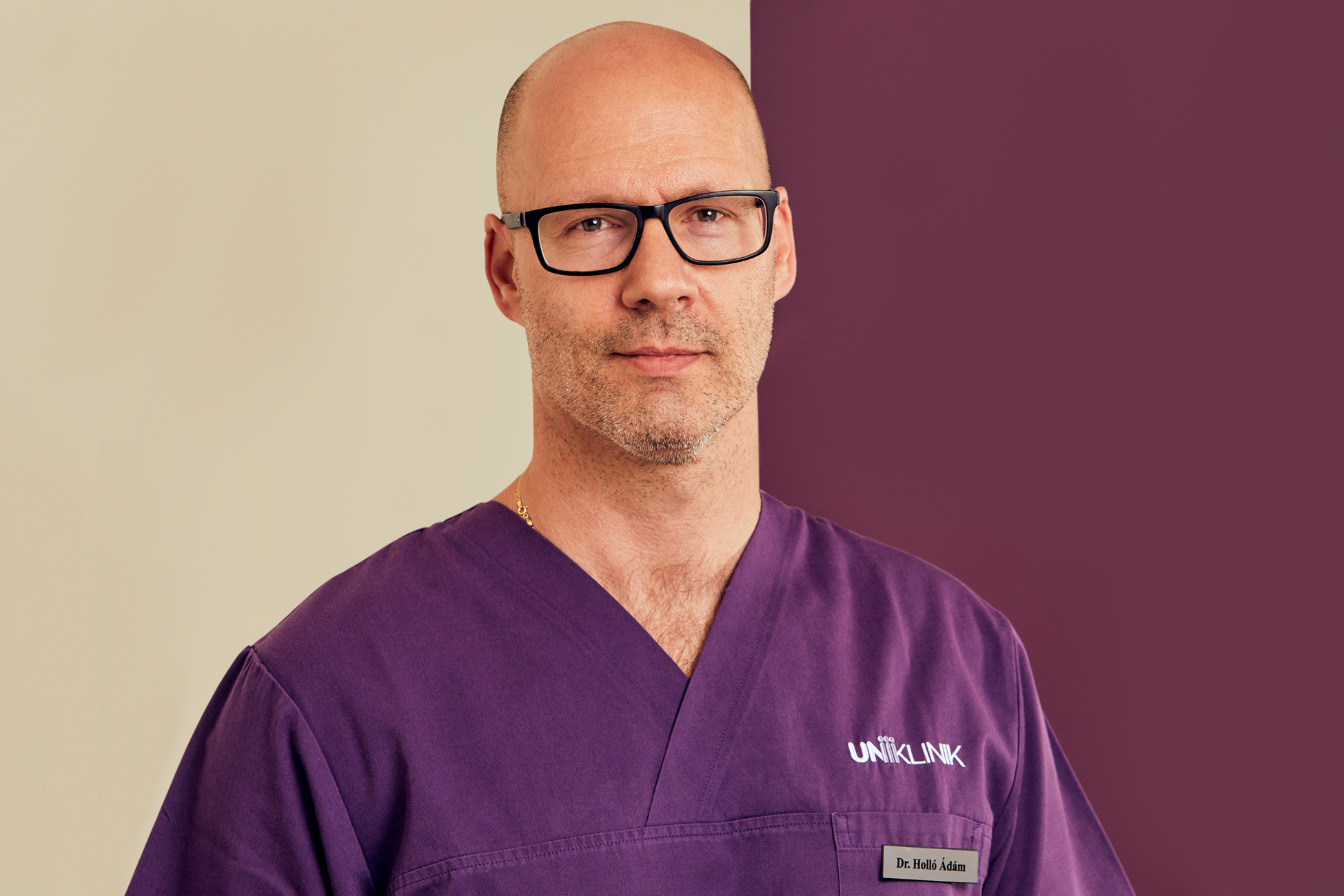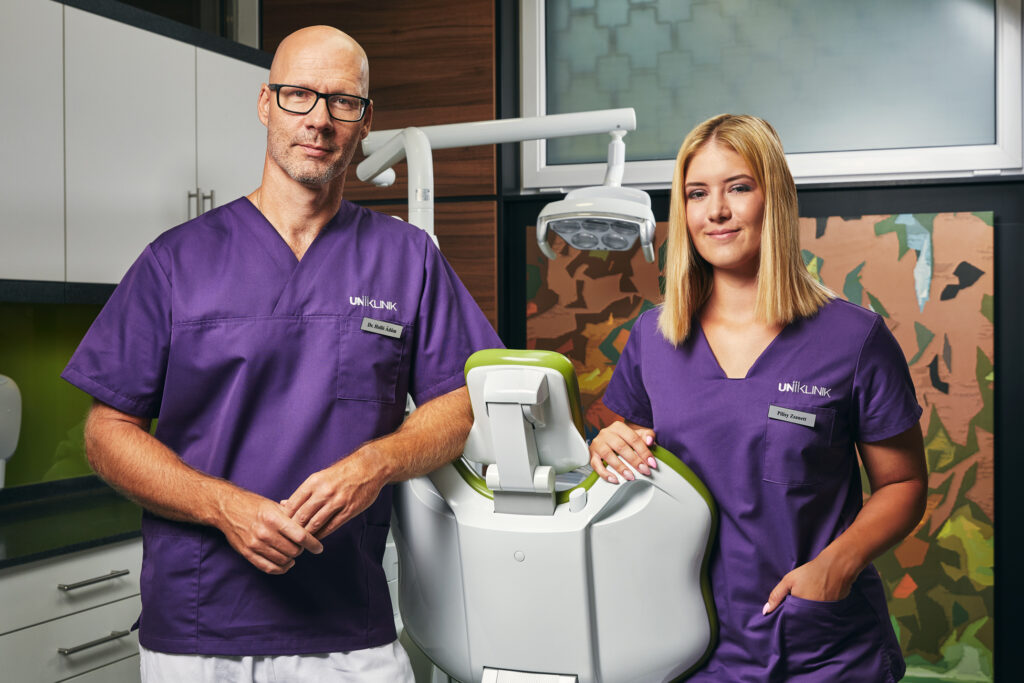
Prosthodontics
Prosthodontics or prosthetic dentistry is the branch of dentistry specialized in using dental prosthetics to replace missing teeth. Why is prosthodontics important? When we lose one or more of our natural teeth, we immediately realise just how important our teeth are for our appearance, health, and daily activities: tooth loss can make chewing, speaking, and smiling more difficult. Fortunately, dental prostheses help us regain these lost functions. What options are available for this in modern dentistry?
What are dental prostheses?
Every dental appliance or solution that replaces a missing part of a tooth, or a complete tooth, is considered a dental prosthesis. There are two main types:
- Fixed prostheses
- Removable prostheses (dentures)
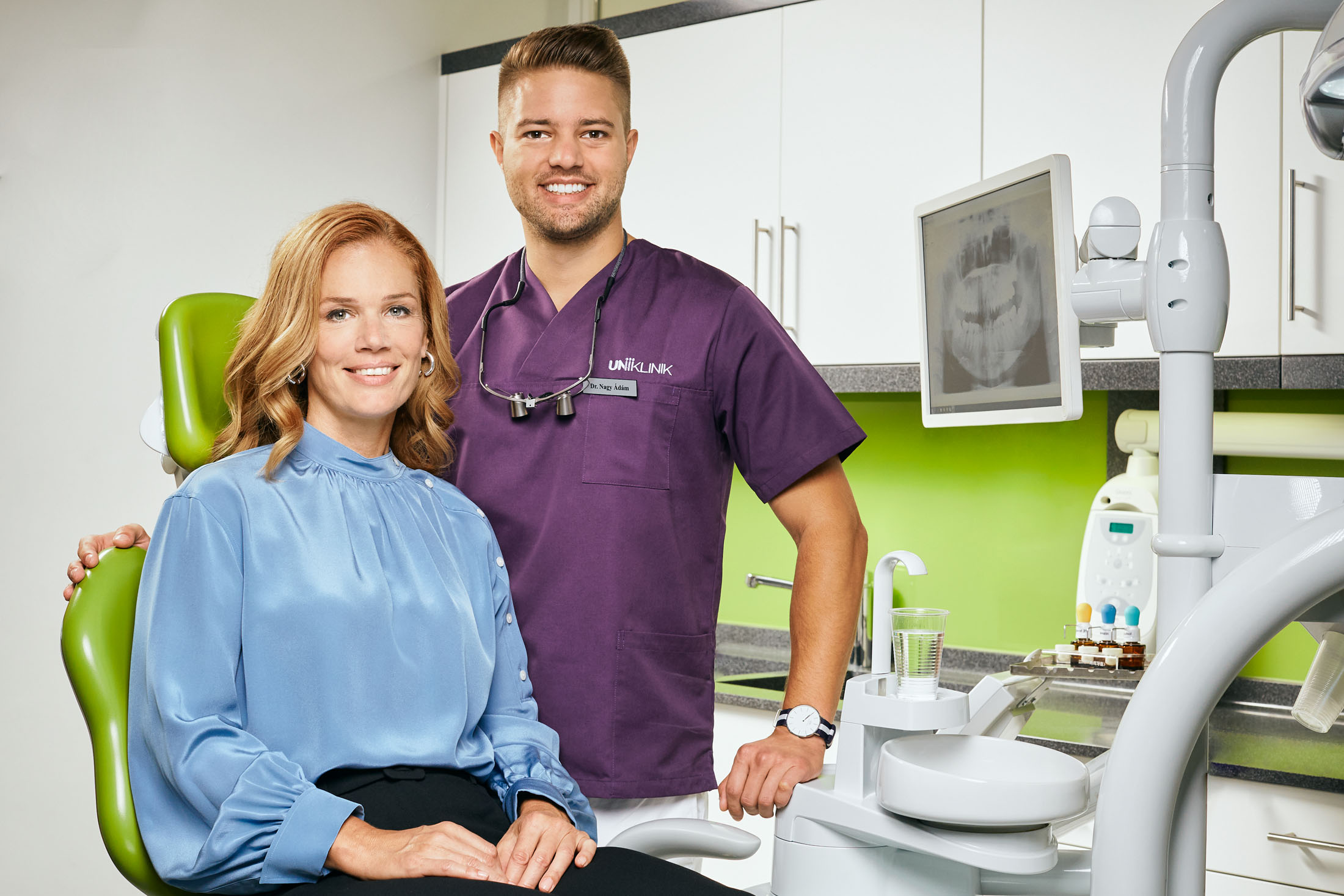
Why is it important to replace missing teeth?
When a part of a tooth breaks off or we lose the entire tooth, a dental prosthesis can restore both its functionality and aesthetics. The primary goal of a dental prosthesis is to replace the lost tooth or rehabilitate a damaged or broken one.
A missing tooth causes not only aesthetic but also functional problems, as a sufficient chewing surface is no longer provided, which leads to overloading the remaining teeth while chewing. As the jawbone in the area of the missing tooth does not get stimulated any more, the bone tissue starts to lose density and becomes thinner. The adjacent teeth may shift or lean, therefore they may also lose their original function in the long term. Due to these reasons, we always recommend replacing the missing tooth as soon as possible.
Thankfully, modern technologies offer several solutions for the replacement of missing teeth. Digital dentistry is fundamentally changing dental care, making dental treatments more effective and pain-free.
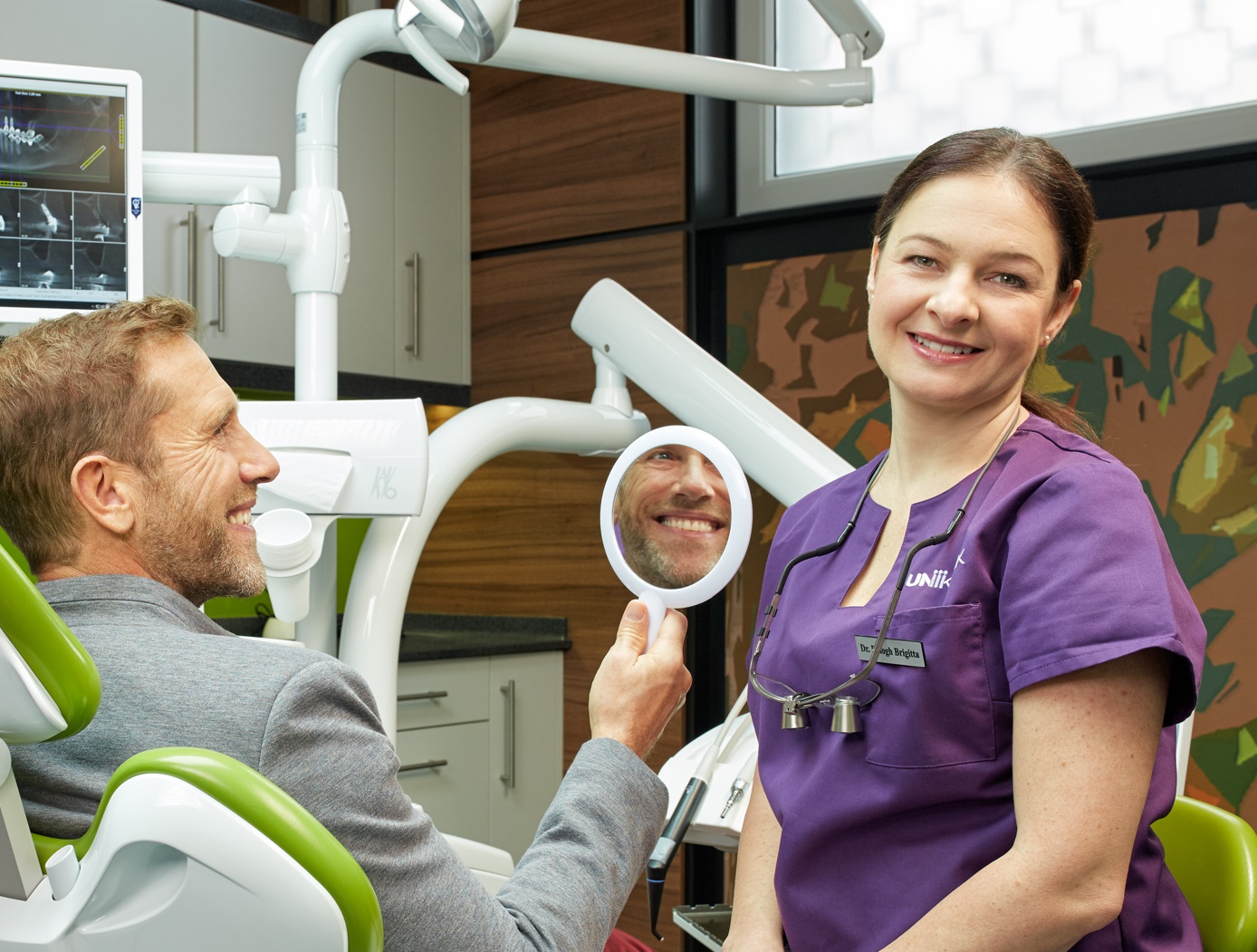
TYPES OF FIXED PROSTHESES
Inlays/onlays
In cases of more extensive decay or tooth material loss, it is no longer sufficient to restore the missing part of the tooth with a filling. In such cases, we recommend inlays or onlays. These dental prostheses, like crowns or bridges, are made based on impressions and fabricated in the dental laboratory.
What material are inlays/onlays made from?
Inlays or onlays can be made from various materials, including composite resin (Gradia), porcelain, or gold. The dentist will help determine which material is the most ideal solution for the specific case.
Dental crowns: what are crowns and when do we recommend them?
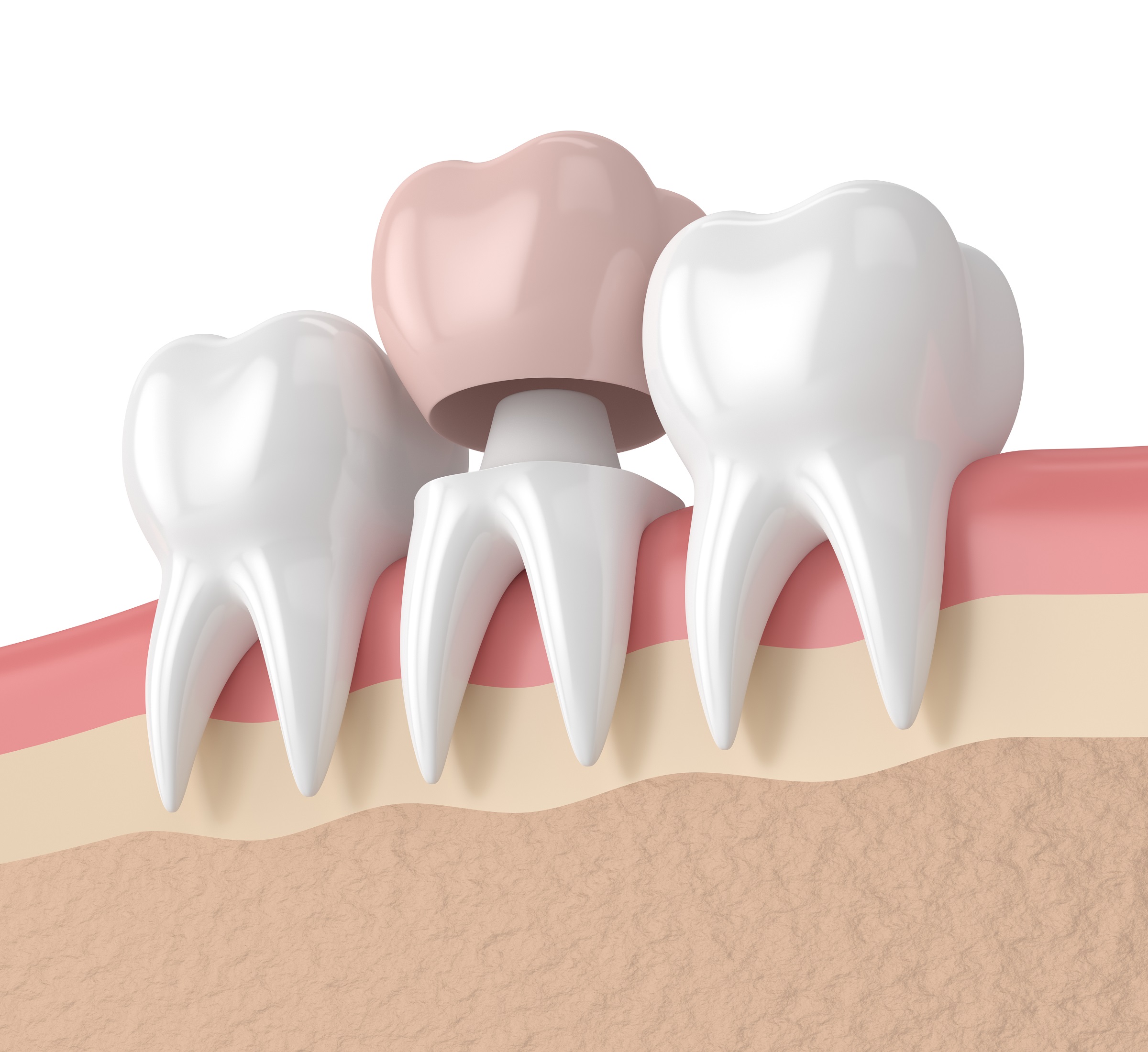
A dental crown is a fixed prosthesis that restores the coronal part of a tooth (above the gumline). A dental crown can only be placed on an existing tooth stump, meaning the tooth root must still be present. The crown is placed over the prepared tooth structure and fixed with cement. A dental crown can also be made for an implant; in this case, it is secured onto the implant structure using the most advanced screw-retention technique.
When do we recommend choosing a dental crown?
- If the tooth is so severely damaged that, after removing the damaged tooth material, it cannot be restored with a simple filling or even with an inlay.
- If the tooth has decay on multiple surfaces or has undergone root canal treatment.
- In cases of diastema, where we wish to aesthetically improve larger gaps between the front teeth.
- When we seek axis correction or fixing other aesthetic issues.
Dental bridges: what are bridges and when do we recommend them?
A dental bridge (or simply bridge) is a type of fixed prosthesis designed to replace one or more missing teeth, typically bridging the gap between remaining natural teeth. It allows for the replacement of one, two, or even more missing teeth by relying on the neighboring teeth, known as abutment teeth, for support. A dental bridge can be anchored to natural teeth or dental implants. For the bridge to be securely placed, it is essential to prepare (reduce the size of) the abutment teeth.
When do we recommend a dental bridge?
- If the teeth adjacent to the missing tooth are significantly damaged and/or have undergone multiple treatments.
- If replacing the missing tooth with an implant is not possible for some reason.
- If the patient prefers to have the prosthesis without surgical intervention.
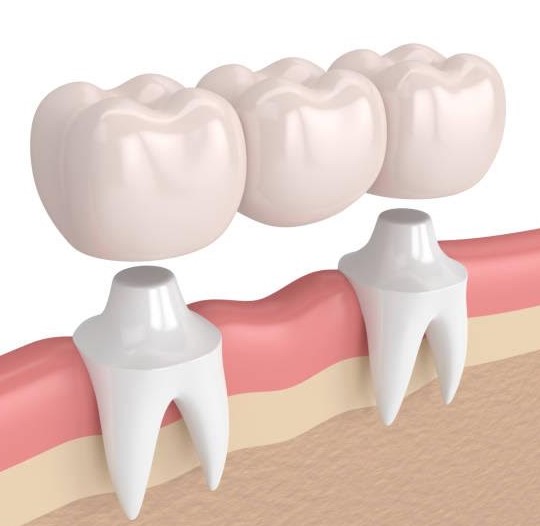
Types of dental crowns and dental bridges:
- CERAMIC CROWNS
- ZIRCONIA FRAMES, ZIRCONIUM CROWNS
- COBALT-CHROMIUM ALLOY PFM CROWNS OR BRIDGES
- PROCERA CROWNS OR BRIDGES ON ZIRCONIUM FRAME
- ZIRCONIA CERAMIC CROWNS OR BRIDGES MADE WITH CAD-CAM
- MONOLITHIC ZIRCONIUM CROWNS OR BRIDGES
- EMAX METAL-FREE CROWNS
What is the difference between dental bridges and dental crowns?
A dental bridge is essentially a crown with additional elements, or a series of crowns connected to one another. It consists of at least three elements and replaces at least one tooth. A single crown is unable to replace a missing tooth as it would need the tooth root to anchor it.
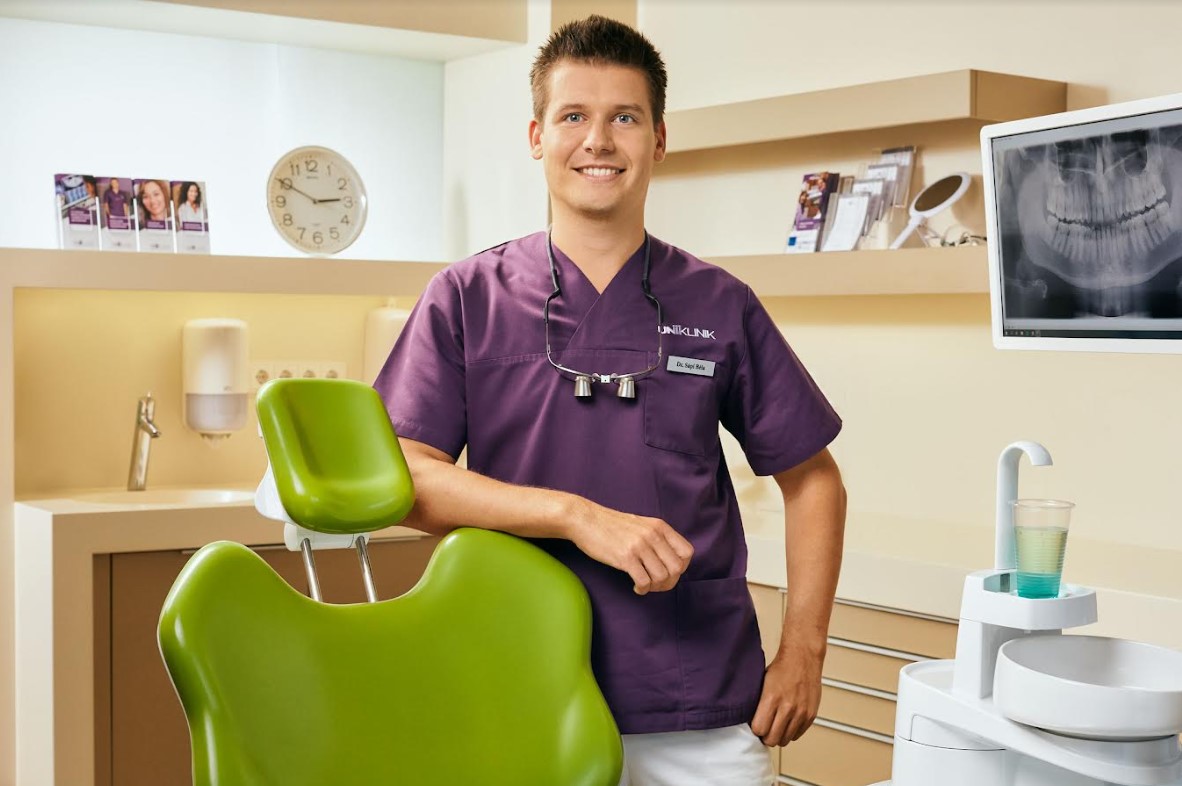
The process of fabricating a dental crown
- Preparing and shaping the tooth
The dentist carefully shapes the tooth under local anesthesia, ensuring the procedure is completely painless. - Taking a dental impression
An impression is taken of the prepared tooth and both full dental arches. The dental prosthesis is then crafted in the dental laboratory based on these impressions. - Shade selection
The dentist selects the appropriate shade for the crown using a shade guide to ensure a natural match with the neighboring teeth. - Trial fitting of the crown framework
The dental laboratory sends the crown framework for a trial fitting. The dentist checks its fit on the prepared tooth or implant abutment and ensures proper bite alignment. - Final cementation of the dental crown
After a final trial, the dentist permanently secures the crown onto the prepared tooth using biocompatible dental cement or, in the case of an implant-supported crown, with a screw.
REMOVABLE PROSTHESES (DENTURES)
If there are not enough remaining teeth to support a fixed prosthesis, or the remaining bone is unable to support dental implants, your dentist may recommend a removable denture to replace the missing teeth. Thanks to modern technology, both full and partial removable dentures offer a comfortable and aesthetically pleasing solution for patients.
Types of removable prostheses
- TEMPORARY DENTURES
- DENTURES WITH A METAL BASE
Dentures are designed to replace missing teeth in cases of extensive or complete tooth loss in the upper, lower, or both dental arches, where a bridge or crown is no longer an option. Dentures can be made of acrylic, which is primarily used for full removable prostheses, or metal, which is commonly used for partial dentures.

Rögzített Fogpótlások
Rögzített vagy más néven fix fogpótlásnak nevezünk minden olyan fogpótlást, melyet a fogorvos rögzít a meglévő, előkészített fogra vagy implantátumra a páciens számára nem eltávolítható módon.
Inlay/Onlay Porcelán
135 000 HUF
Inlay/Onlay Gradia
95 000 HUF
Porcelán leplezésű kobalt-króm korona vagy hídtag (2 év garanciával)
A porcelán leplezésű kobalt-króm korona, vagy más néven hagyományos, vagy fémkerámia korona, egy rögzített fogpótlás. A nikkelmentes fém vázra kerámia leplezés kerül, így a fogpótlás teljes mértékben fogszínű és esztétikus.
95 000 Ft
PROCERA korona és híd cirkónium vázra (5 év garanciával)
A Procera egy technológiát jelent, mellyel elsősorban cirkonból készülhetnek saját fogakra koronák és hidak. A cirkónium vázra kerámia leplezés kerül, így a fogpótlás esztétikailag is tökéletesen illeszkedik a meglévő fogakhoz.
180 000 Ft
Cirkónium korona CAD-CAM (2 év garanciával)
A cirkónium korona egy cirkónium vázra készülő, kerámaileplezéssel ellátott fogpótlás. A cirkónium váz színében és fényáteresztő képességében megegyező a természetes fogakéval, így a cirkónim korona egy teljesen élethű és esztétikus fogpótlás.
115 000 Ft
Emax fémmentes korona front fogra
Amikor a fogpótlás a front régióban történik, a legmagasabb esztétikai elvárásoknak kell megfelelni. Ilyenkor javasoljuk az E.max préskerámia koronákat. Az E.max préskerámia egy teljesen fémmentes fogpótlás, mely biokompatibilitása miatt nem allergizál.
135 000 Ft
Ideiglenes korona
Az ideiglenes korona a fogpótlás készítése során a lecsiszolt fogakat védi a különböző mechanikai és kémiai behatásoktól. Fenntartja a páciens harapási magassságát és esztétikai igényeket is kielégít.
22 500 - 60 000 Ft

Kivehető Fogpótlások
Ideiglenes vagy akár végleges megoldásként is alkalmazzuk a kivehető protéziseket, fogpótlásokat. Elkészítésük ugyanúgy egyénre szabottan történik, lenyomatok alapján, hogy minél kényelmesebb és esztétikusabb megoldást nyújthassanak viselőinek.
Ideiglenes kivehető fogpótlás
Részleges, vagy teljes ideiglenes kivehető fogpótlást arra az időszakra javaslunk pácienseinknek, amíg a végleges fogpótlás el nem készül, és átadásra nem kerül. Így a felmerülő kényelmetlenségek, a kedvezőtlen esztétikai és funkcionális probléma orvosolható a páciensnek nem kell fog nélkül maradnia.
120 000 Ft -tól
Kivehető fémlemezes fogsor, a kényelmes megoldás
425 000 Ft
Prosthetics in Budapest
Get high-quality dental prosthetics in the heart of Budapest at Uniklinik Dental and Implant Center! Our expert team, including Dr. Brigitta Balogh, specialist in conservative dentistry and prosthodontics, Dr. Ádám Holló, specialist in oral diseases, conservative dentistry, and prosthodontics, Dr. Ádám Nagy, and Dr. Béla Sápi, both specialists in conservative dentistry and prosthodontics, are ready to assist you. With our online appointment system, booking a consultation is fast and convenient.



